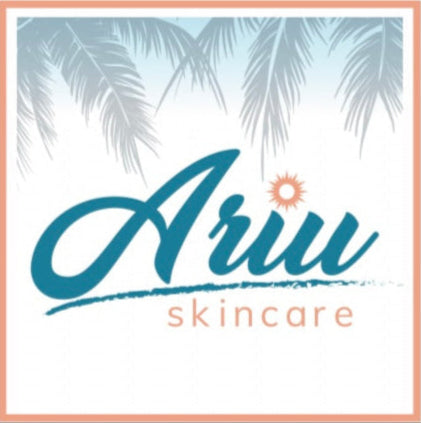Skincare Buzzwords Uncovered: Truth Behind the Labels
Share
The cosmetic and skincare industry is booming, with new products hitting the shelves daily, each promising miraculous results. However, the industry is full of buzzwords and marketing jargon designed to attract consumers. While these terms might sound appealing, they often lack substantive meaning. Understanding these buzzwords is crucial for making informed decisions about the products you use on your skin.
Since starting a skincare company and discovering the facade behind these labels, I've realized how much consumer manipulation occurs through marketing words aimed at influencing women. Now that I have this information, I feel compelled to share it with you in hopes that we can see through the industry’s misleading claims and make more informed choices. In this article, we'll break down some of the most common skincare industry buzzwords and reveal what they really mean.
Section 1: "Dermatologist Tested"
The term "dermatologist tested" frequently appears on skincare product labels, suggesting that a dermatologist has endorsed the product. However, this term is vague and lacks standardization. There is no regulation on what "tested" entails—it could mean anything from a dermatologist overseeing the testing process to merely being consulted.
Reality check: "Dermatologist tested" does not necessarily guarantee safety or effectiveness. Always look for more specific information about the testing process and the dermatologist's involvement.
Section 2: "Non-Comedogenic"
"Non-comedogenic" is a term used to indicate that a product will not clog pores. This promise is particularly appealing to those with acne-prone skin. However, there is no regulatory definition for what constitutes "non-comedogenic," and the term can vary between products and brands.
Reality check: There is no universal standard for non-comedogenic products. A product labeled as such may still clog pores for some individuals. It’s important to pay attention to how your skin reacts to specific ingredients.
Section 3: "Hypoallergenic"
"Hypoallergenic" suggests that a product is less likely to cause allergic reactions. However, there are no regulatory standards defining this term, and it does not guarantee that a product will not cause an allergic reaction.
Reality check: Products labeled as hypoallergenic can still cause allergic reactions. The term is largely meaningless without more detailed information about the ingredients and testing procedures.
Section 4: "Natural" and "Organic"
"Natural" and "organic" are popular terms that appeal to consumers looking for healthier, safer products. However, there is significant confusion and lack of regulation around these terms. "Natural" can mean anything from containing natural ingredients to being minimally processed. "Organic" refers to ingredients grown without synthetic pesticides or fertilizers but still lacks strict guidelines.
Reality check: "Natural" and "organic" products can still contain synthetic ingredients and may not be inherently safer or more effective. Look for certifications from reputable organizations for assurance.
Section 5: "Clinically Proven"
"Clinically proven" implies that a product's effectiveness has been demonstrated through clinical trials. However, these trials are often small, manufacturer-funded, and lack rigorous standards.
Reality check: "Clinically proven" claims can be based on minimal or biased studies. Always consider the size and quality of the studies backing these claims.
Section 6: "Fragrance-Free" and "Unscented"
"Fragrance-free" means that no fragrance ingredients are added to the product, while "unscented" means that the product may contain masking agents to hide the scent of other ingredients.
Reality check: "Unscented" products can still contain masking fragrances that may be irritating. For truly fragrance-free options, read the ingredient list carefully.
Section 7: "Anti-Aging"
Anti-aging products promise to reduce signs of aging, such as wrinkles and fine lines. However, many of these claims are exaggerated and not supported by substantial evidence.
Reality check: Focus on products with proven ingredients like vitamin C rather than falling for broad "anti-aging" claims from one study done in mice. Vitamin C has over 30 years of human trial research and is in my opinion the best anti-aging product out there.
Section 8: "Medical Grade"
"Medical grade" suggests that a product is of higher quality or more effective due to its association with medical professionals or clinics. However, there is no standard definition or regulation for this term.
Reality check: "Medical grade" products are not necessarily better or more effective. The term is not regulated, so its use can be arbitrary. Instead of being swayed by this label, consumers should focus on the product's ingredients and the evidence supporting its claims. Look for independent clinical trials, peer-reviewed research, and recommendations from trusted skincare professionals to ensure you are choosing a genuinely effective product.
Section 9: "Clean Beauty"
"Clean beauty" has become a significant trend, implying products are free from harmful ingredients. However, there is no clear, regulated definition for "clean," leading to varying interpretations.
Reality check: "Clean beauty" is often a marketing term. Ingredients considered "clean" by one brand may be seen as harmful by another. Research and verify the safety and efficacy of the ingredients yourself.
Conclusion
Understanding skincare buzzwords is essential for making informed choices about the products you use. These terms often sound appealing but can be misleading without proper regulation and standardization. Instead of relying solely on marketing claims, focus on reading ingredient lists and seeking out evidence-based products. Remember, this trend of unregulated words is strictly a marketing strategy to make products sound more reliable, but they often lack substantial meaning. These buzzwords are created by marketing teams to influence consumer perception, not to guarantee product safety or effectiveness. By doing your research and looking beyond the labels, you can make better choices for your skin and overall health.
